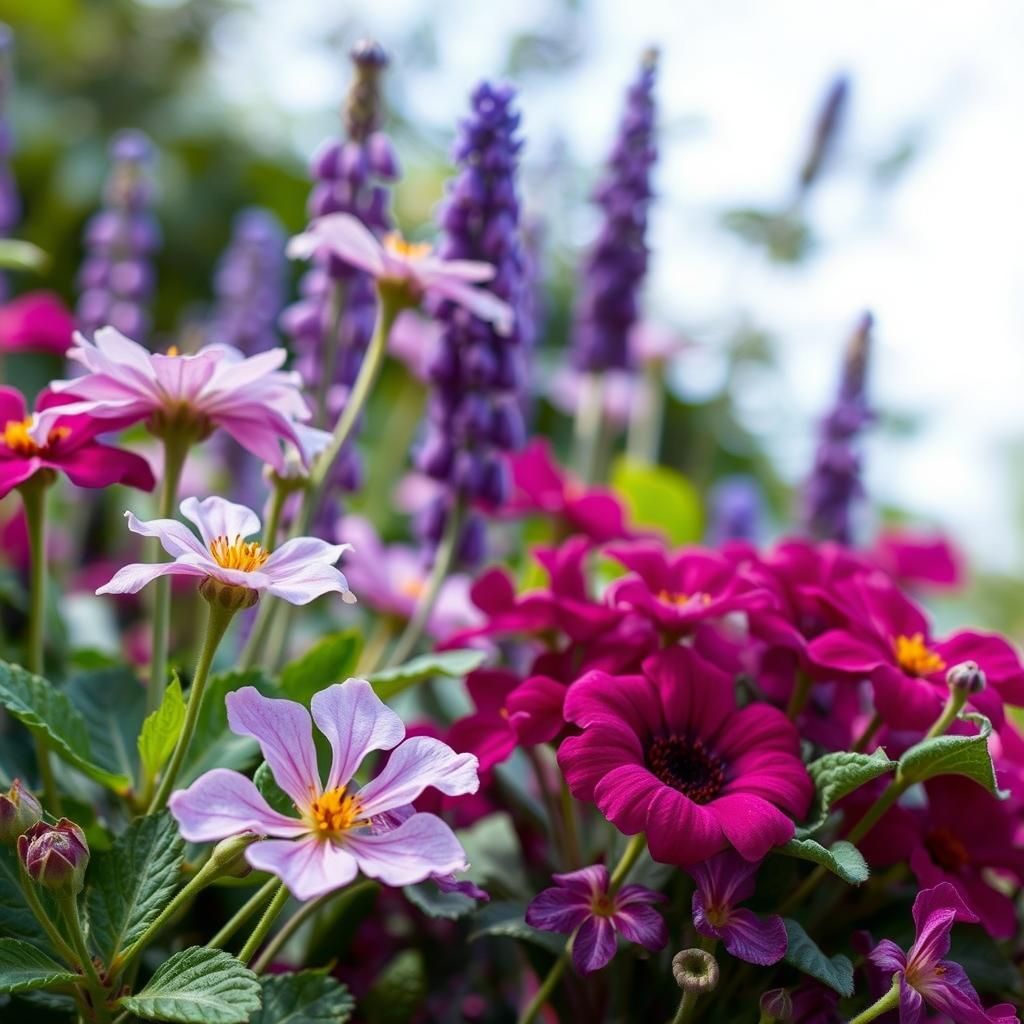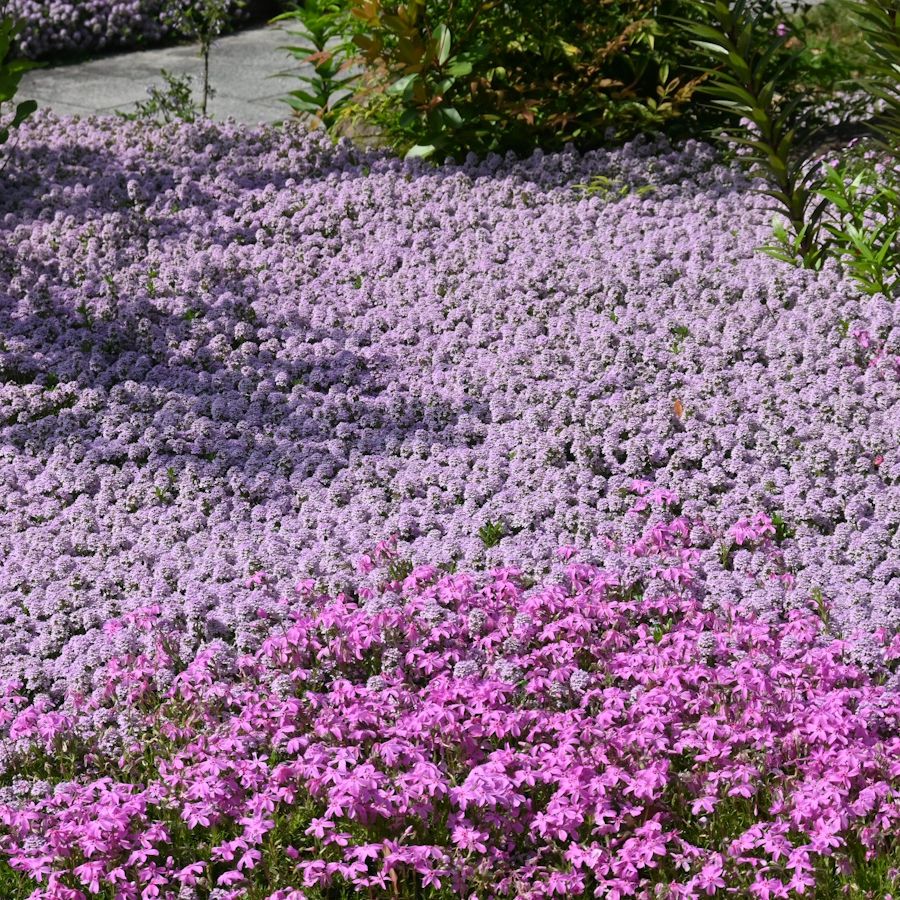What is the Fastest Spreading Perennial? Discover the Top Options for Your Garden

Perennials can transform your garden, providing vibrant color and foliage year after year. Among these reliable plants, some species stand out for their rapid growth and ability to spread quickly, making them ideal for filling empty spaces and creating lush landscapes. This article explores the fastest spreading perennials, highlighting top options that not only thrive in various conditions but also offer unique textures and blooms. Whether you’re looking to cultivate a dense ground cover or a striking border, discover these remarkable plants that will enhance your garden with minimal effort and maximum impact.
What is the Fastest Spreading Perennial?
The fastest spreading perennial is often considered to be the Bamboo, particularly species such as Phyllostachys. This remarkable plant can grow several feet in a single day under optimal conditions, making it not only one of the most visually striking perennials but also a rapidly colonizing species. Known for its hardy nature and ability to adapt to various soil types, bamboo spreads through its extensive rhizome network, which allows it to establish new shoots quickly. This fast growth rate can be beneficial for erosion control and creating privacy screens but can also be a challenge for gardeners if not properly managed, as it may outcompete slower-growing plants in the area.
Characteristics of Fast Spreading Perennials
Fast spreading perennials are characterized by their vigorous growth and ability to cover large areas in a relatively short time. Many of these plants have extensive root systems, such as rhizomes or stolons, which enable them to propagate quickly and establish in new locations. They often thrive in a variety of environmental conditions, from full sun to shade, and can adapt to different soil types. The growth habit of these plants can provide benefits such as weed suppression and soil stabilization, making them valuable in both garden settings and natural landscapes.
Benefits of Fast Spreading Perennials
The benefits of fast spreading perennials include their ability to establish quickly, providing immediate ground cover and preventing erosion. They can enhance the aesthetics of a space due to their lush growth and often vibrant flowering capabilities. Many of these plants are low maintenance once established, requiring less care than slower-growing varieties. Additionally, they can attract beneficial wildlife such as bees and butterflies, contributing to the overall biodiversity of the garden. Their sheer volume can also offer privacy, making them ideal for landscape design.
Common Examples of Fast Spreading Perennials
Some common examples of fast spreading perennials include Creeping Jenny, Mondo Grass, and Vinca Minor. Creeping Jenny is known for its vibrant yellow foliage and is often used in ground cover applications. Mondo Grass, while slower than bamboo, still spreads effectively through its clumping habit. Vinca Minor, commonly known as periwinkle, thrives in shaded areas and creates a dense carpet of greenery with purple flowers. These species are popular among gardeners for their rapid growth and ability to cover bare spots in the landscape.
Managing Fast Spreading Perennials
Managing fast spreading perennials is crucial to prevent them from overtaking a garden. Implementing barriers like rhizome barriers can help contain aggressive growers such as bamboo. Regular pruning may also be necessary to keep them in check, particularly in landscape settings where they are mixed with slower-growing species. Additionally, it's important to monitor their growth, especially in spring when many perennials are at their most vigorous, ensuring they do not encroach on desired areas. Using mulch can also help suppress unwanted growth and maintain the health of surrounding plants.
Environmental Impact of Fast Spreading Perennials
Fast spreading perennials can have a significant environmental impact, largely depending on their growth behavior and habitat. While they offer benefits like improving soil structure and encouraging native wildlife, some species may become invasive outside their native areas, outcompeting local flora and altering ecosystems. For instance, certain types of bamboo can create dense thickets that suppress the growth of native plants, leading to reduced biodiversity. It’s crucial for gardeners to select non-invasive species suited to their local environment to mitigate potential negative impacts.
| Plant Name | Growth Rate | Spread Method | Popularity |
|---|---|---|---|
| Bamboo | Fast | Rhizomes | High |
| Creeping Jenny | Moderate | Stolons | Medium |
| Mondo Grass | Moderately Fast | Clumping | Medium |
| Vinca Minor | Fast | Stolons | High |
What perennial flower spreads fast?
The perennial flower that is known for its rapid spreading is the daylily (Hemerocallis). Daylilies are highly adaptable and can thrive in various conditions, which makes them a favorite among gardeners who want quick coverage in their flower beds. This plant can spread through both rhizomes (underground stems) and seeds, allowing for a prolific growth rate. Their vibrant flowers bloom for a single day, but each plant produces multiple blooms throughout the season, contributing to their popularity.
Benefits of Fast-Spreading Perennials
The advantages of having fast-spreading perennials like daylilies in the garden include:
- Rapid Coverage: They can quickly fill in bare spots in the garden, providing a lush look.
- Low Maintenance: These plants require minimal care once established, making them ideal for busy gardeners.
- Soil Erosion Control: Their root systems stabilize soil, helping to prevent erosion on slopes.
Common Fast-Spreading Perennials
In addition to daylilies, several other perennials are known for their quick growth:
- Hostas: Thrives in shade and spreads rapidly with large, lush leaves.
- Mint: Although often considered an herb, it can be treated as a perennial that spreads vigorously.
- Bugleweed: A ground cover that quickly spreads and is effective for suppressing weeds.
Planting and Care Tips
To ensure the best results with fast-spreading perennials, consider the following tips:
- Soil Preparation: Ensure the soil is well-drained and rich in organic matter to support growth.
- Sunlight Requirements: Plant in suitable sunlight conditions based on the specific plant type for optimal blooming.
- Regular Watering: Keep the soil consistently moist until the plants are established.
Controlling Spreading
If you wish to control the spread of fast-growing perennials, consider these strategies:
See also:
- Plant Boundaries: Use barriers such as edging to limit the area in which the plants can spread.
- Regular Dividing: Divide the plants every few years to maintain size and promote healthier growth.
- Mulching: Using mulch can help suppress unwanted spreading and control weeds.
Best Location for Planting
Choosing the right location for your fast-spreading perennials is crucial:
- Sunny Areas: Most perennials thrive in sunny spots; ensure they receive at least 6 hours of sunlight.
- Moisture Levels: Consider areas that retain moisture but are not waterlogged.
- Accessibility: Plant them in accessible locations for easy maintenance and enjoyment.
What perennials multiply the fastest?
Perennials that multiply quickly are essential for gardeners looking to establish a vibrant landscape with less effort. These plants are known for their ability to propagate through various methods such as division, cuttings, or self-seeding. Here are some of the perennials that are renowned for their rapid multiplication:
Factors Influencing Fast Multiplication
The rate at which perennials multiply can depend on several factors, including their growing conditions, soil type, and climate. Some key considerations include:
- Soil Quality: Well-drained, nutrient-rich soil encourages quick growth and multiplication.
- Sunlight: Most fast-multiplying perennials require full sun for optimal growth.
- Watering: Adequate moisture levels are crucial for many perennials, especially those that spread rapidly.
Common Fast-Multiplying Perennials
Several perennials are favored for their ability to spread quickly and fill garden spaces. These include:
- Daylilies: Known for their resilience and fast multiplication through clumping.
- Hostas: These plants can quickly fill areas with their lush foliage and are easily divided.
- Lavender: Not only does it multiply quickly when propagated through cuttings, but it also attracts pollinators.
Propagation Methods for Fast Growth
Understanding the most effective propagation methods can enhance your ability to multiply perennials. Key methods include:
- Division: Splitting established plants into smaller sections can rejuvenate them and promote faster growth.
- Cuttings: Taking stem cuttings from healthy plants can create new specimens rapidly.
- Self-Seeding: Some perennials produce seeds that germinate easily, allowing for natural expansion in the garden.
Maintenance for Optimal Multiplication
To ensure that perennials multiply quickly and effectively, proper maintenance is essential. Consider the following:
- Fertilization: Regular feeding with a balanced fertilizer can improve growth rates.
- Mulching: Applying mulch helps retain moisture and suppress weeds, benefiting rapid growth.
- Pest Control: Keeping plants free from pests will ensure they remain healthy and productive.
Designing a Garden with Fast-Multiplying Perennials
Incorporating fast-multiplying perennials into your garden design can create a lush environment. Here are tips for effective design:
- Layering: Position taller plants behind shorter ones for depth.
- Grouping: Planting in clusters enhances visual impact and allows for easier maintenance.
- Seasonal Blooms: Choose perennials that bloom at different times to ensure continuous color throughout the seasons.
What is the plant that spreads quickly?

The plant that spreads quickly is commonly known as kudzu (Pueraria montana var. lobata). This perennial vine is native to Asia but has become notorious in the United States, particularly in the Southeast, where it has become an invasive species. Kudzu can grow up to a foot per day under optimal conditions, overtaking landscapes and smothering other plants. Its rapid growth can significantly disrupt local ecosystems by competing for sunlight, water, and nutrients.
Characteristics of Kudzu
Kudzu is characterized by its large, green leaves and fragrant purple flowers. It has a deep root system that helps it survive in various environments. Here are a few key features of kudzu:
- Vigorous Growth: Kudzu can grow exceptionally fast, reaching over 100 feet in length.
- Perennial Nature: It regrows every spring from its extensive root system.
- Adaptability: Kudzu can thrive in a wide range of soil types and weather conditions.
Ecological Impact of Kudzu
Kudzu's rapid spread has made it a problem for ecological balance. It can form dense mats that block light to other plants, leading to their decline. Some of the ecological impacts include:
- Habitat Disruption: It displaces native flora and fauna, altering the local ecosystem.
- Increased Erosion: By choking out native plants, it can increase soil erosion.
- Reduction of Biodiversity: The dominance of kudzu can decrease the diversity of species in an area.
Control Measures for Kudzu
Controlling kudzu is essential for restoring local ecosystems. Several strategies can be employed to manage its growth effectively:
See also:
- Mechanical Removal: Cutting or mowing kudzu can help to reduce its spread.
- Chemical Treatments: Herbicides may be used to limit its growth, though care must be taken to protect other plants.
- Prescribed Burning: Controlled burns can eliminate kudzu, promoting the growth of native species.
Benefits of Kudzu
Despite its invasive nature, kudzu can have some benefits that are worth noting:
- Soil Improvement: Kudzu can improve soil health by fixing nitrogen.
- Forage Crop: In some contexts, it can be used as animal feed due to its high protein content.
- Medicinal Uses: Parts of the plant have been used in traditional medicine for various ailments.
Cultural Perception of Kudzu
Kudzu has a mixed reputation in popular culture, often viewed negatively due to its invasiveness. However, it also has a unique place in Southern culture. Some aspects include:
- Folklore and Art: Kudzu has inspired stories and art, reflecting its prominence in Southern landscapes.
- Culinary Uses: Some communities use kudzu roots and leaves in traditional dishes.
- Environmental Awareness: Its growth has prompted discussions and awareness about invasive species.
What is the fastest growing plant for a privacy screen?

One of the fastest growing plants for a privacy screen is the Bamboo species, particularly the Clumping Bamboo varieties. Bamboo can grow exceptionally fast, often reaching heights of 30 feet or more within a few years. Its rapid growth rate, combined with its dense foliage, makes it an excellent option for creating a natural privacy barrier. The thick stems and lush leaves not only offer visual privacy but can also help reduce noise. When planted in the right conditions, bamboo thrives and can establish itself quickly.
Benefits of Using Bamboo for Privacy Screens
Bamboo provides numerous benefits that make it an ideal choice for a privacy screen. Its fast growth rate, durability, and aesthetic appeal are just a few reasons why many homeowners opt for this plant.
- Fast Growth: Bamboo can grow up to 3 feet in a single day, making it one of the fastest-growing plants.
- Year-Round Privacy: It retains its leaves throughout the year, offering continuous coverage.
- Eco-Friendly: Bamboo is a sustainable plant that is environmentally friendly.
Types of Bamboo Suitable for Privacy Screens
Not all bamboo species are the same, and some are better suited for privacy screens than others. Choosing the right type can enhance the effectiveness of your screen while ensuring that it does not become invasive.
- Fargesia Rufa: This clumping type is non-invasive and perfect for smaller gardens.
- Bambusa Textilis: Known for its tall growth, this type provides excellent privacy.
- Phyllostachys Aurea: Golden Bamboo can reach significant heights while maintaining an eye-catching appearance.
Care and Maintenance of Bamboo
Proper care is vital to ensure that your bamboo grows healthily and effectively serves as a privacy screen. Understanding its requirements will help you achieve the best results.
- Watering: Regular watering is essential, especially during dry periods.
- Fertilization: Use a balanced fertilizer in spring to promote growth.
- Trimming: Regular maintenance, including trimming, helps control the size and shape.
Planting Bamboo for Optimal Growth
To maximize bamboo's growth potential, planting techniques are crucial. The right conditions will make a significant difference in how fast and effectively it can form a privacy screen.
- Selecting the Right Location: Choose a spot with plenty of sunlight for optimal growth.
- Soil Preparation: Well-draining soil rich in organic matter will support healthy development.
- Spacing: Space bamboo plants adequately to allow air circulation and growth.
Potential Challenges with Bamboo
While bamboo is a robust option, there are some challenges associated with its growth. Being aware of these can help you mitigate any issues that may arise.
- Invasiveness: Some bamboo species may spread aggressively; opt for clumping types to avoid this.
- Maintenance Needs: Regular care is necessary to keep bamboo healthy and tidy.
- Pests: Be on the lookout for potential pests that may affect bamboo health.
Questions from Our Readers
What is the fastest spreading perennial?
The fastest spreading perennial is often considered to be Ajuga reptans, commonly known as bugleweed. This plant can quickly cover large areas due to its aggressive growth habit and ability to form dense mats through stolon production.
What conditions favor the growth of fast spreading perennials?
Fast spreading perennials thrive in a variety of conditions, but they particularly prefer well-drained soils and can do well in both full sun and partial shade. Adequate moisture levels and fertile environments can significantly enhance their growth rate and spread.
Can fast spreading perennials be invasive?
Yes, many fast spreading perennials have the potential to become invasive species if left unchecked. Their rapid growth and ability to out-compete native plants can lead to biodiversity loss in the ecosystem where they are introduced.
How can I control the spread of fast spreading perennials in my garden?
To control the spread of fast spreading perennials, regular pruning and dividing can be effective strategies. Implementing barriers or using landscape fabric can also help to limit their expansion while still allowing you to enjoy their aesthetic benefits.
See also:

If you want to read more articles like What is the Fastest Spreading Perennial? Discover the Top Options for Your Garden, we recommend you check out our Perennials category.
Leave a Reply

Related Articles